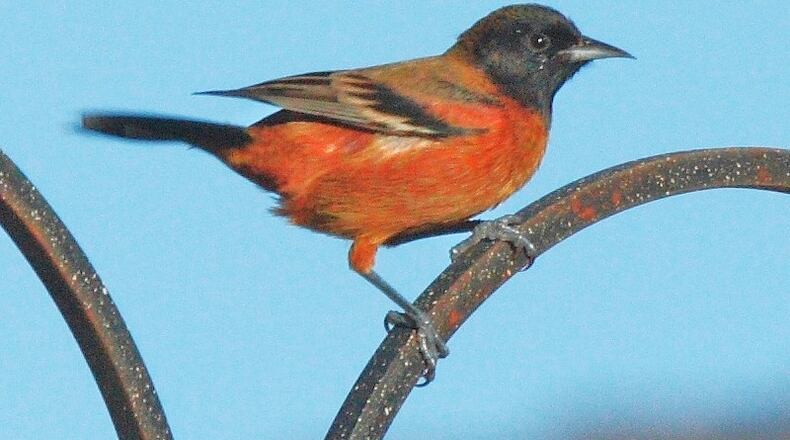August, of course, is the peak of summer — a month of hot, buggy days and sultry nights. But for many of Georgia’s migratory birds, August might as well be fall.
That’s because August is when several songbird species that nested in Georgia during spring and early summer already are well on their way back to winter homes in the tropics of Central and South America and the Caribbean islands. By the time the season actually starts, their “fall” migration will be over.
One of them is the orchard oriole, a slim black-and-chestnut colored songbird that occurs across Georgia during the spring nesting season. In mid-July, some orchard orioles in Georgia already were heading back south; now, they are arriving in Costa Rica and as far south as Colombia to spend the winter.
More will be leaving over the next few weeks, and by late August, nearly all orchard orioles will be gone from Georgia — fully ensconced in their winter haunts well before fall’s arrival on Sept. 22 in North America.
Back in the spring, around mid-April, the orioles were arriving in Georgia from their winter grounds, quickly mating and building peculiar hanging pouch nests woven from grass and other plant fibers.
To accommodate their tight migration schedule, their nesting season had to be short — time enough to raise only one brood. (By comparison, year-round Georgia species such as cardinals and bluebirds may raise three — and even four — broods per season.)
Some other Georgia spring-nesting species also will be back in the tropics by late August — ruby-throated hummingbirds, Louisiana water thrushes, American redstarts, cerulean warblers, prothonotary warblers, blue-winged warblers, yellow warblers, common nighthawks, blue-gray gnatcatchers and others.
For most of Georgia’s migratory birds, though, peak fall migration indeed will occur in fall — late September through early October.
IN THE SKY: From David Dundee, Tellus Science Museum astronomer: The moon will be full on Monday — the “Fruit Moon,” as the Cherokee peoples called August’s full moon. Mercury is low in the east about an hour before sunrise. Venus, higher in the east, rises about three hours before dawn. Mars rises in the east about an hour before midnight. Jupiter and Saturn rise in the east just before sunset. Both will appear near the moon on Aug. 1.
About the Author
Keep Reading
The Latest
Featured


